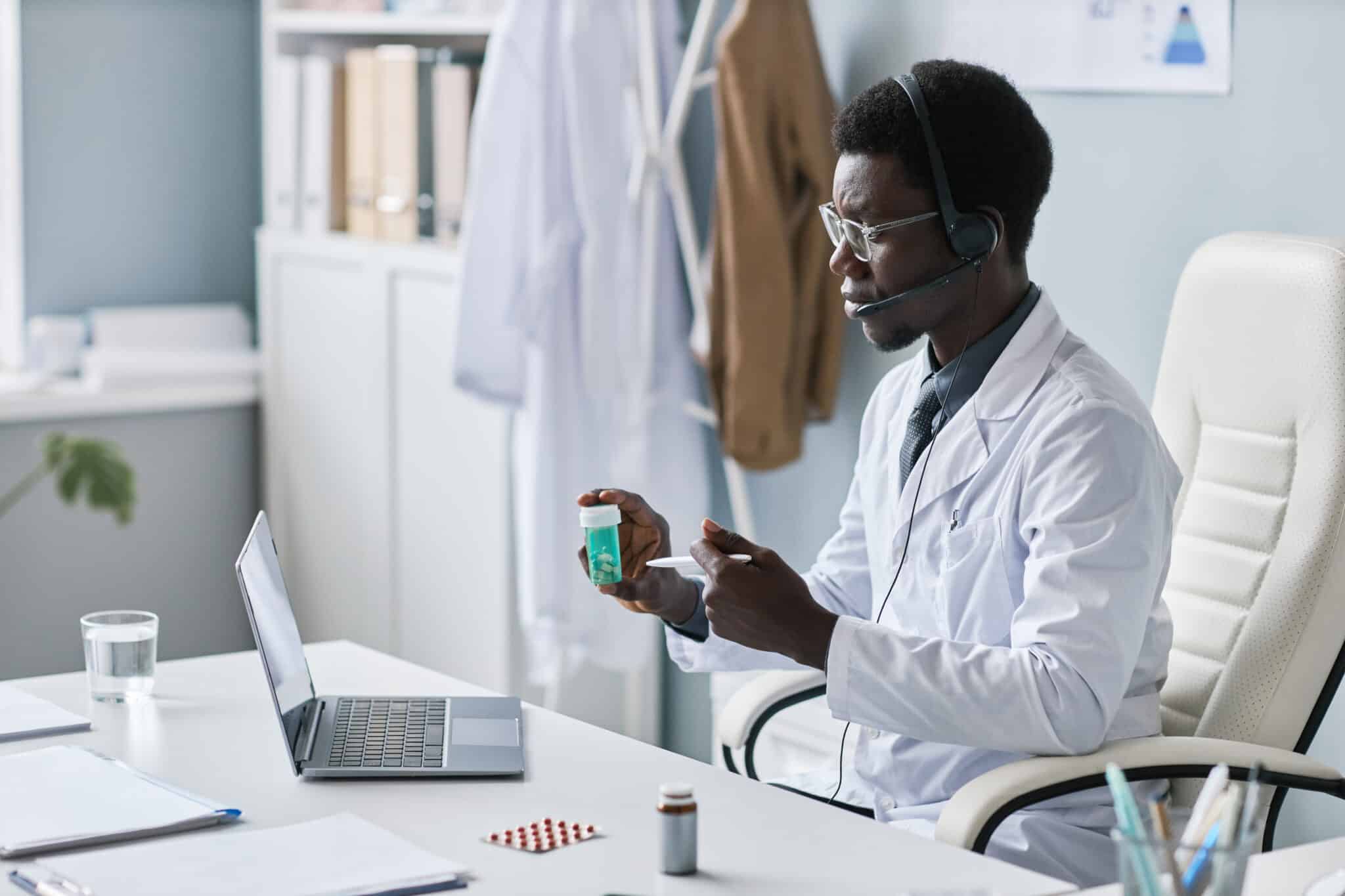As the saying goes, “boys will be boys”. Whether it is testosterone, social expectations, or the “secret man code” that steers the traditional behavior of men around the world is a subject that has been debatable for decades.
Nonetheless, the data is absolute: the drunk driver behind the wheel of a car is overwhelmingly likely to be male. Accidental poisonings are dominated by boys over girls in every region of the world. The unbelted young adult passenger in the car is about three times more likely to be male. For many years, men have been conditioned to ‘be tough’, ‘push through’, and trivialize any risks.
From a healthcare perspective, reeling in this precarious and mysterious gender for preventative care can feel a bit elusive… and for good reason. A mere 68% of men were even able to identify a clinician that they see for routine care, while only 75% reported having seen ANY healthcare provider over the previous two years! Similar surveys of women showed a stark difference of 81% and 91%, respectively.
Not surprisingly, then, the majority of men reported preferring to keep health concerns to themselves, delaying reaching out for help as long as possible and foregoing the annual physical. As a card-carrying member of the gender that these dismal statistics focus on, I feel compelled to do something to reverse these trends. Well, maybe not in my own case exactly. It is much easier to proclaim what others should do versus actually doing those things myself. But I am making significant progress as you will see.
Toughin’ it out – in real life
In my 30’s, I noticed that my left testicle seemed to be a bit larger than usual. Did I immediately call the physician? No. I decided to wait and see if it was something that would go away on its own. It didn’t. Did I call the physician at that point? No. I asked a male friend if he had ever experienced such a phenomenon. He hadn’t. Now, as you know, the “ask a friend” resource is not always reliable.
I think of the ‘phone a friend lifeline’ option on the game show, Who Wants to be a Millionaire, where participants are sometimes given good advice from their friend but are almost as equally likely to be given incorrect information. If you do are not well equipped to correctly answer a question about the moons of Saturn, chances are, your friend isn’t either.
Nonetheless, with the input of a friend, I decided to ‘keep an eye on it’. That wasn’t the correct answer. The testicle gradually got even larger and increasingly difficult to ignore.
Reluctantly, I made an appointment with a urologist to have my testicle examined. Strikingly, the person in scheduling seemed to be a lot more concerned than I had been for the past month or so. She manipulated the schedule and asked me to come in the following day. The next day, the physician discussed the possibility of testicular cancer. I was at the ‘typical age’ for it, with the average age at diagnosis being 33. Testicular cancer will impact about 1 in 250 men in their lifetime, not that rare when you start thinking about the number of men that you know.
Despite my own delay in asking for professional help, the medical team went into quick action to get a diagnosis. A same day testicular ultrasound was ordered. And, yes, that is absolutely as awkward as it sounds. It involves medical gel and probes in all of the wrong places. Yet, at this point, I realized that it was necessary. Fortunately, I left the physician’s office that day with good news: I had a benign hydrocele, a pocket of fluid, that would resolve on its own. Cancer free.
meet Justin Birckbichler, Men’s Health Advocate and cancer survivor
Not everyone is this fortunate. Through my tenure with PharmCon freeCE, I had the privilege to meet Justin Birckbichler, a testicular cancer survivor and staunch advocate for reversing the disturbing trends in men’s health. Justin approaches the topic in a casual and relatable way for many men: he makes it funny. If his website does not portray that (A Ballsy Sense of Tumor), the front license plate on his car certainly does.
So, if you see the Toyota with the license plate, ‘1BALLR’ rolling through Virginia, be sure to say ‘hello’ to Justin! Justin’s journey was a long and tough one, but it had a positive outcome: he is now cancer free and arguably one of the most relatable men’s health advocates! Among other things, Justin promotes the idea of monthly testicular self-exams. According to the American Cancer Society, the best time to examine your testicles is during or after a bath or shower, when the skin of the scrotum is relaxed.
Procedure:
- Hold your penis out of the way and examine each testicle separately.
- Hold your testicle between your thumbs and fingers with both hands and roll it gently between your fingers.
- Look and feel for any hard lumps or nodules (smooth rounded masses) or any change in the size, shape, or consistency of your testicles.
another opportunity for prevention: Colorectal cancer screening
So, back to my own reservations in seeking out preventative care. As I mentioned earlier, I am learning as I grow older. I wisely proceeded with the ‘annual physical’, where my provider astutely noted that I was 47 years old. Guidelines for colorectal cancer screening have recently changed, to start at age 45 instead of 50, the previous milestone.
I was given two options for screening: a colonoscopy, which yet again involves placing medical gel and probes in all of the wrong places … OR a new option where you can mail in a stool sample for analysis. Without regard to the UPS carrier or the poor lab assistant in Wisconsin, I chose the latter option.
A few weeks later, I got a call saying the test was positive! I was advised to follow up with a diagnostic colonoscopy, the fate that I had hope to avoid by pulling in the resources of UPS and the Wisconsin lab assistant.
This is another crossroads where one has to make a responsible call. So, I received instructions to “prepare myself” for the colonoscopy. For those who have never “prepared themselves” for a colonoscopy, it involves consuming enough stimulant laxatives to effectively relieve a constipated elephant.
This is followed by a gallon of Gatorade, spiked with an osmotic laxative. That is a fancy term that simply means that the cocktail pulls every ounce of water from the body and deposits it into the intestine. In combination with the stimulant laxatives, the results are nothing short of explosive. So, I am feeling good about doing my part here in taking charge of my own health. Well, okay. That is not exactly where my thoughts were on that day.
Nonetheless, I managed through the night and proceeded to the outpatient suite, hoping that the gastric disturbances had completely subsided. From there, I don’t really remember anything. Truly. For those who say that the prep is the worst part, they are absolutely correct. I woke up to some muttering about how well I had done and that it was a good thing that I had this done. As it turns out, I had multiple pre-cancerous polyps removed. The gastroenterologist seemed confident that I was one of the patients who grossly benefited by the change in screening guidelines.
Had I waited until age 50, he predicted the outcome would have been more critical. So, I’ve been added to the ‘frequent flyer’ club for diagnostic colonoscopies. The flavor of spiked Gatorade will likely not fade before it is time for the next procedure. But I’ve embraced that now. After all, I have children at home. I have to be there for them. I can’t let my reluctance stand in the way of that, whether it be having a testicle examined or having a probe stuffed into undesirable cavities. I’ve tried to encourage my loved ones to do the same.
Making sense of prostate Cancer Screenings
My father was recently diagnosed with prostate cancer after some routine ‘PSA bloodwork’ raised red flags on a laboratory document. I am thankful that those flags were raised, and it was detected early enough to be effectively treated. But that news potentially places me on another frequent flyer list: PSA screening. Of course, this is an individual decision that has to be made with one’s own provider. The recommendations for PSA bloodwork and/or digital rectal exams vary, depending upon the source.
The CDC echoes the 2018 USPSTF general recommendations which state:
- Men 55-69 years old: Make an individual decision about being screened with a PSA test, considering both the benefits and harms of screening for prostate cancer
- Men 70+ years old: Should NOT be screened for prostate cancer routinely
And, while the American Cancer Society echoes the language around the importance of risk and benefit discussions, their recommendations take a more stringent stance in regard to age:
- Age 50+: Consider PSA screening if at an average risk of prostate cancer and are expected to live at least 10 more years
- Age 45+: Consider PSA screening if you’ve had a first degree relative (father or brother) diagnosed with prostate cancer at an early age (younger than 65) OR if you are an African American male.
- Age 40+: Consider PSA screening if you’ve had more than one first degree relative with prostate cancer at an early age.
The American Cancer Society goes on to say that a ‘digital rectal exam’ may be an additional part to the screening process.
So, if you’ve detected a bit of hesitancy in the recommendations with the language surrounding benefits and risks of screening, you are perceptive indeed! And those reservations center around the potential for ‘overdiagnosis’. The truth is that screening finds prostate cancer in some men who would never have had symptoms from their cancer in their lifetime. Treatment of men who would not have had symptoms or died from prostate cancer can cause them to have complications from treatment, but not benefit from treatment.
In the end, most guidelines leave the discretion to an individual decision. This sometimes poses issues with insurance coverage of PSA bloodwork, as the insurance carrier may be working from one set of guidelines while the practitioner is working from another conflicting set of recommendations. I ran into this issue with my own PSA testing. The result? I paid out of pocket for the PSA blood test. But it was a small price to pay for peace of mind, given my father’s early diagnosis.
Men’s preventative Health is more than just cancer screenings
There is so much more to say about men’s health. I have yet to even mention sexual health and the importance of HPV vaccination and STI screenings. I have not mentioned the role of PrEP (Pre-exposure Prophylaxis) in male populations who are particularly susceptible to HIV infection. I have not mentioned benign prostatic hyperplasia (BPH) and sexual dysfunction disorders that plague so many men. I have not mentioned the very real possibility of breast cancer in male populations.
I have failed to mention how disproportionate male populations are in the arena of opioid use disorder (learn about freeCE’s Substances of Abuse Specialty Pharmacist Certificate) . I am going to hold all of these important topics to end with what I believe to be the most critical aspect of all in men’s health: mental wellbeing.
Male populations continue to grossly dominate the rates of suicide in the United States, with males dying at a rate 4 times higher than that of women. Second, only to unintentional injury, suicide remains a leading cause of death in males under age 34. To put that into perspective, there were more than two and a half times as many suicides in the United States as there were homicides. Let that sink in for a moment.
Think of the seemingly endless news of violent homicides. That, sadly, pales in comparison to what we are doing to ourselves. We are, in fact, our own worst enemy. For our veterans, the news is even more dire: Suicide rates among veterans are over 20% higher than the general population.
Although there are many philosophies on the roots of suicidal thoughts, experts point back to a common feature of suicide survivors: that of ‘perceived burdensomeness’. In short, the individuals:
- Perceive themselves as a burden
- Perceive that the state is permanent and stable
- View death as a potential solution to the problem
And, perceptions, whether mistaken or not, absolutely influence behavior.
BATTLING & OVERCOMING MALE STIGMAS ABOUT MENTAL HEALTH
When coupled with traditional male attitudes of ‘being tough’ and ‘pushing through’, we have an absolute recipe for disaster. Men are reluctant to seek mental health treatment. Stigma is very real and devastating. Those experiencing mental health issues are often considered weak, broken, and not strong enough. These misplaced beliefs are literally killing us! Remember, the majority of men reported preferring to keep health concerns to themselves, delaying reaching out for help as long as possible. In this arena, this often leads to worsening depression and anxieties, which have much broader implications.
The stigma is real and strong. In previous years, I have battled major depressive disorder myself. And, while I have openly spoken here about otherwise insanely private topics like my own testicles and colon, I still find myself being much more reserved in openly talking about my mental health. Why is that? Why am I uncomfortable with this part of our conversation here? I think that it is because it makes me vulnerable. I am sharing something about myself that you might not understand. But, then again, you might.
On the occasions where I have had the privilege of having truly open conversations with other men, I have found that I am far from alone. It is truly an area where many unnecessarily struggle in silence. The strongest of those that I have spoken to are those who reached out for help. There is inherent value there … and we must look out for one another. And, sometimes, all it takes is asking.
In one study, when hospitals asked emergency room patients if they had had suicidal thoughts and then followed up, it cut the risk of suicidal behavior by half! Imagine what we could accomplish by adopting a similar open policy with those around us every day. Depression is absolutely treatable, and people do get better, although this fact is difficult to fathom while navigating through the fog. To best assist those we care about, experts recommend being the one to:
- Ask
- Be there
- Keep them safe
- Help them connect
- Follow up
The National Suicide Prevention lifeline recently enacted a new ‘short digit’ phone number: 9-8-8, making it as an easy memorable resource. Since the implementation of the 9-8-8 service, calls to the center have increased by 45%. Mental challenges do not mean that you are weak, broken, or not strong enough. It means that you are human, facing battles that can not be won alone.
Turning the tide in men’s health
In short, men’s health can be ugly. It requires some help from others. There are unpleasant realities that we must embrace if we are going to turn the tide for the next generation of young men. The risks range from malignant cancers to our own thoughts, and neither is less devastating than the other. But, we can do this! We can take the preventative steps to increase the odds for a better tomorrow. In the words of Justin, it would just be ‘nuts’ not to!
Attend live discussions on important topics like this with freeCE
On November 30, as part of our “Beyond the Classroom” series, freeCE will hold a live panel discussion with three men’s preventative health experts and patient advocate Justin Birckbichler. This will be an excellent opportunity to ask your questions about this critically important topic and earn live CE credit.
This live event, as well as the rest of freeCE’s live webinars, is available through our Gold membership. Sign up for unlimited access to live and on-demand CE, including more courses covering related topics like reproductive health and preventative health.
The freeCE team is participating in No Shave November
In honor of our upcoming “Beyond the Classroom” session, freeCE and our teammates at KnowFully Learning Group are participating in “No Shave November” to bring awareness to men’s preventative health. KnowFully Learning Group as a whole will be supporting the Testicular Cancer Society this month as well.
To see how our team’s No Shave November is shaping up, check out our before and afters below!

























